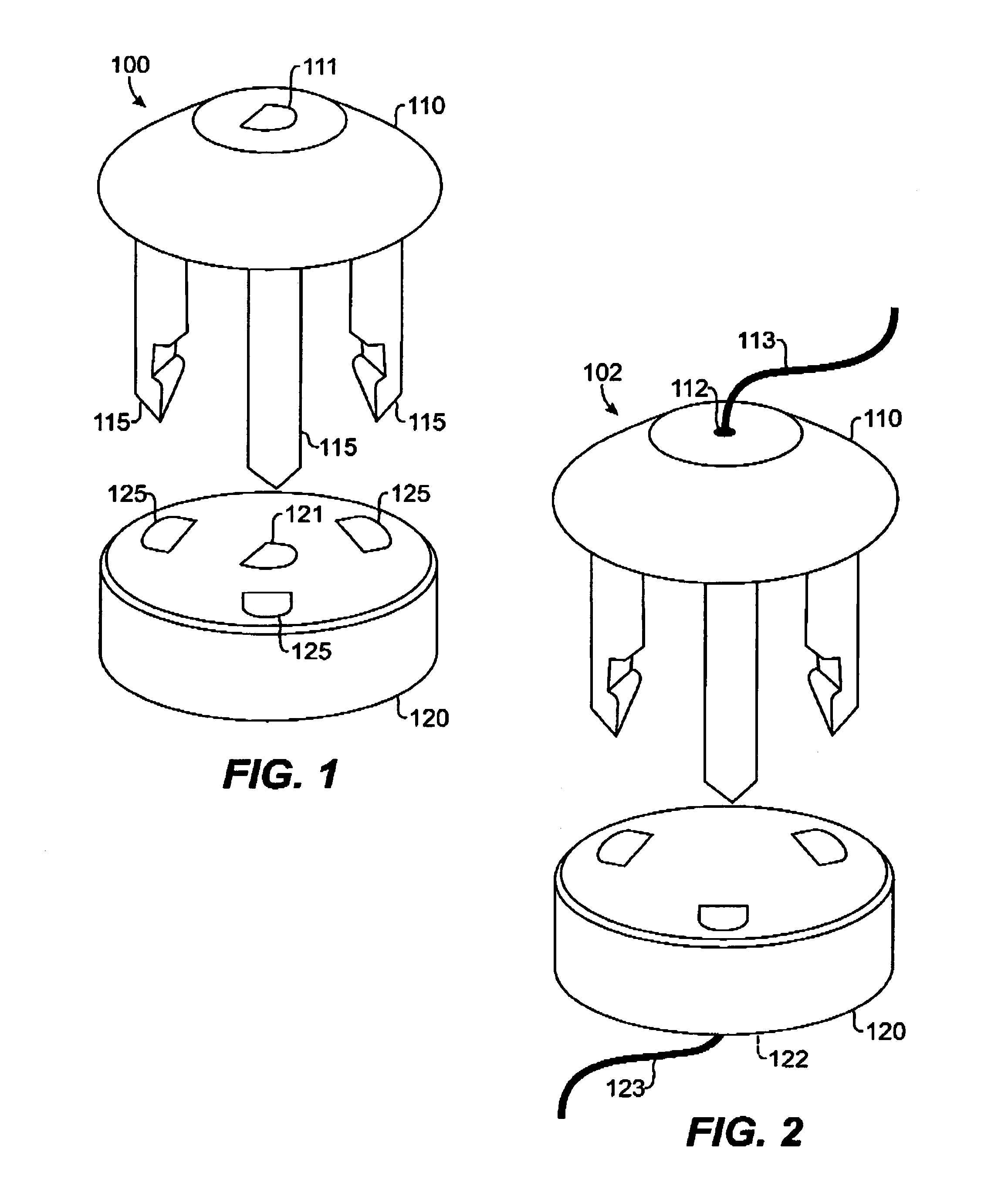Soft tissue cleat
a soft tissue and cleat technology, applied in the field of soft tissue cleats, can solve the problems of pain, weakness, loss of function, and often suffered orthopedic injuries
- Summary
- Abstract
- Description
- Claims
- Application Information
AI Technical Summary
Benefits of technology
Problems solved by technology
Method used
Image
Examples
Embodiment Construction
[0024]Classically, when soft tissue is torn or avulsed from bone, it is repaired by suture fixation. This applies to many orthopedic injuries such as torn or ruptured tendons and ligaments. In the shoulder, a common injury is a torn rotator cuff in which any portion of the rotator cuff tendons tear within themselves or avulse from their insertion into bone. The embodiments of the present invention described below will be discussed with respect to the torn rotator cuff model. However, it is noted that the device embodying the present invention may be applied to the entire spectrum of orthopedic injuries where soft tissue is torn or avulsed from bone.
[0025]Devices embodying the present invention overcomes prior techniques for repairing soft tissue injuries. In particular, with embodiments of the present invention, forces are distributed over a much larger surface area than existing techniques, and thus are more able to resist shear forces, and prevent pull-out of sutures.
[0026]FIG. 1 ...
PUM
 Login to View More
Login to View More Abstract
Description
Claims
Application Information
 Login to View More
Login to View More - R&D
- Intellectual Property
- Life Sciences
- Materials
- Tech Scout
- Unparalleled Data Quality
- Higher Quality Content
- 60% Fewer Hallucinations
Browse by: Latest US Patents, China's latest patents, Technical Efficacy Thesaurus, Application Domain, Technology Topic, Popular Technical Reports.
© 2025 PatSnap. All rights reserved.Legal|Privacy policy|Modern Slavery Act Transparency Statement|Sitemap|About US| Contact US: help@patsnap.com


